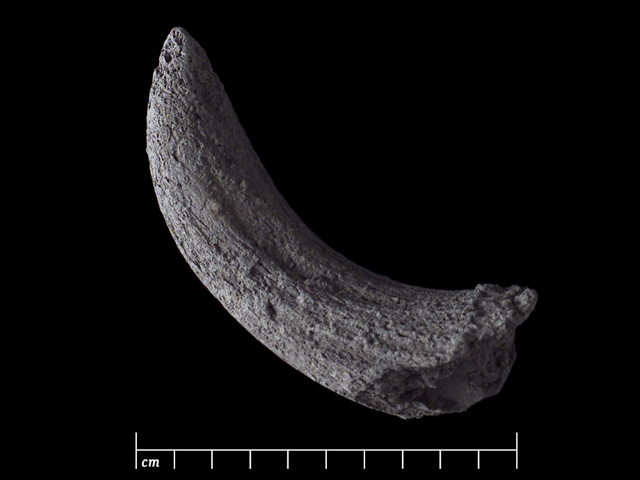 STUDIO PHOTOGRAPHS
STUDIO PHOTOGRAPHSIntroduction | Research | People | Tools
 STUDIO PHOTOGRAPHS
STUDIO PHOTOGRAPHS
BOVINE HORN (TYA 642: 2260)
Type: Horn of bovine (Bos taurus), unburnt bone.
Use: Cattle (faunal residue).
Site: Raisio, Ihala, Mulli abode.
Period: Viking Age / Crusade Age / Early Middle Ages.
Dating: 980-1220 A.D.
Photographer: Antti Huittinen.
The oldest ostheological evidence of cattle-breeding in Finland goes back to the late Bronze Age , ca. 1000 - 500 B.C. However, it is possible that, like in Estonia and Sweden, cattle-breeding started in Finland as early as the late Stone Age. The bones found in the Mulli abode show that besides farming, hunting, and fishing, cattle-breeding also played an important role as a source of livelihood. In the settlement site, bovine, sheep, goat, swine, and chicken were raised.
Cows gave milk in summer, when they had calves. In the winter, the nourishment of the livestock was scanty and, therefore, the cows were dry. Since milk does not keep very long without preparation, the milk may have been was soured or churned into butter and cheese.
Older beef cattle was slaughtered usually once a year, in the autumn. The slaughtering was a men´s job and the tools used were the ax and the knife. Everything possible was used: meat, entrails, fat, blood, leather, and horns. From the leather, hides were tanned and used as materials for clothes, and possibly in bartering. The meat was preserved either by leavening, drying, or smoking. Salting may have been rare because salt was an imported good. Fresh roasted or boiled meat was served only immediately after the slaughtering in the autumn, or in some special occasion.
The horn of a cattle could be shaped into drinking horns, sausage-horns to be used in the making of sausages, or as a musical instruments.
Other pictures:
Other related topics:
Coordinates: x=102, y=510, unit 4193.
Introduction | Research | People | Tools